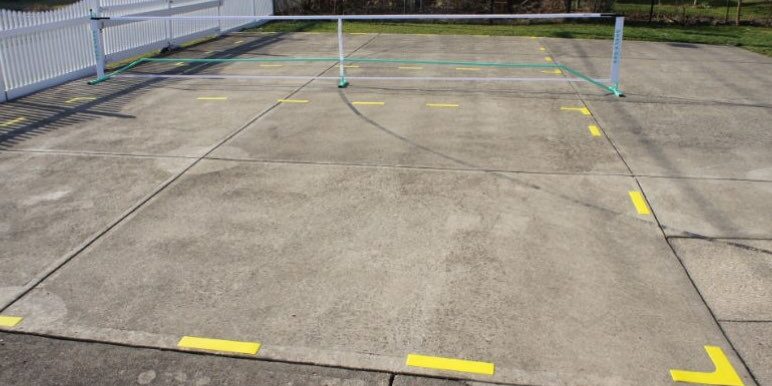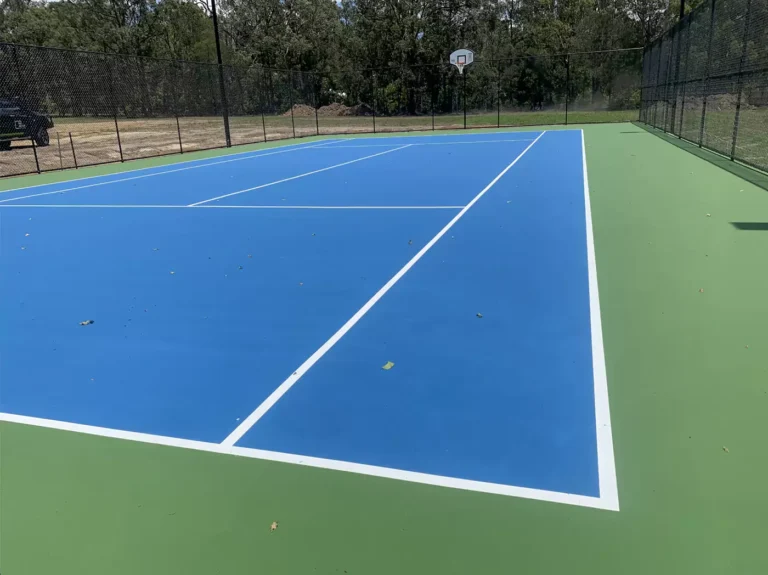Inexpensive Pickleball Court Construction for Homes and Communities
Inexpensive Pickleball Court Construction for Homes and Communities
Blog Article
Sustainable Practices in Pickleball Court Building And Construction You Ought To Know
As the appeal of pickleball proceeds to rise, so too does the demand for lasting techniques in court construction. The impact of these methods expands far past the court itself.
Picking Eco-Friendly Materials
Selecting environment-friendly materials is a crucial step in the building and construction of lasting pickleball courts. The selection of lasting materials not just reduces ecological influence yet also boosts the longevity and efficiency of the court. Trick products include reused rubber for the surface area, which provides superb sturdiness and shock absorption while diverting waste from landfills.
In addition, utilizing locally sourced materials lowers transport emissions and supports regional economies. Pickleball court construction. For instance, using native hardwoods for fence and seats can provide a sustainable visual while guaranteeing resilience versus the components.
Incorporating permeable materials for court structures can better add to sustainability by enabling natural water drain and reducing runoff. These selections not only shield local ecosystems yet likewise advertise much healthier play environments.
Reliable Water Drainage Solutions
While the selection of environment-friendly materials is vital, executing effective drainage services is equally crucial for preserving sustainable pickleball courts. Appropriate water drainage not only safeguards the court surface from water damage but also lessens erosion and overflow, promoting environmental stability.
Efficient drain systems can consist of permeable paving, which permits water to infiltrate the ground instead of pooling externally. This minimizes the probability of standing water, which can result in mold and mildew and various other maintenance issues. In addition, including strategically positioned drainage channels and swales can guide excess water away from the court location, making certain a dry playing surface and avoiding dirt erosion.
Utilizing indigenous vegetation in the landscaping around the courts can better enhance drainage by absorbing excess water and minimizing drainage. These plants call for less watering and promote biodiversity, aligning with lasting practices.
Moreover, it is crucial to regularly keep the water drainage system to guarantee its lasting performance. This consists of cleaning debris and monitoring for blockages. By focusing on efficient water drainage solutions, pickleball court producers can dramatically add to the sustainability and durability of the facility, eventually profiting both players and the environment.
Energy-Efficient Illumination Options
As the demand for pickleball continues to grow, incorporating energy-efficient lights choices right into court design has actually ended up being increasingly vital for sustainability. Typical lighting systems frequently eat extreme power, contributing to higher functional expenses and ecological influence. Therefore, adopting modern, energy-efficient innovations is necessary for both new constructions and remodellings.
LED (Light Emitting Diode) lights stands apart as a premier choice as a result of its longevity and power cost savings (Pickleball court construction). Compared to standard lighting, LEDs use roughly 75% much less energy and can last up to 25 times much longer, dramatically minimizing upkeep expenses. Moreover, the directional nature of LED lights decreases light pollution, making sure that lighting is focused on the court as opposed to surrounding areas.

Lasting Surface Alternatives
Exploring lasting surface alternatives for pickleball courts has actually acquired traction amongst gamers and home builders alike. The emphasis on eco-friendly materials not just aligns with the expanding environmental understanding but likewise boosts the performance and sturdiness of the courts.
This product provides excellent shock absorption, decreasing the danger of injuries for gamers while promoting sustainability. These floor tiles are simple to change and mount, and their convenience permits for different court configurations.
Natural lawn courts are additionally becoming a lasting option, advertising biodiversity he said and decreasing the heat island look at here impact. However, they require regular upkeep and water, which may not align with all sustainability goals.

Water Preservation Strategies

One more effective method involves the setup of rainwater harvesting systems. These systems store and collect rain for usage in maintaining court surfaces and landscape design. This approach not only preserves potable water but additionally reduces reliance on local sources.
Furthermore, using drought-resistant landscaping around the courts is crucial. Indigenous plants call for less water and are better adapted to regional environment problems, therefore lowering general water consumption. Additionally, using efficient visit this site watering systems, such as drip watering, makes sure that water is delivered directly to plant origins, reducing evaporation and waste.
Conclusion
Integrating sustainable methods in pickleball court construction considerably adds to ecological preservation and resource performance. By prioritizing these practices, the building and construction of pickleball courts can align with wider ecological goals while promoting long life and performance within areas.
As the popularity of pickleball proceeds to climb, so also does the need for sustainable methods in court building and construction.Picking environmentally friendly materials is a critical step in the building of sustainable pickleball courts. By focusing on energy-efficient illumination choices, pickleball court fabricators can contribute to a more lasting future while meeting the needs of stakeholders and gamers alike.Including lasting surface area options not just improves the efficiency of pickleball courts however likewise paves the way for executing effective water preservation methods.Incorporating lasting methods in pickleball court building substantially adds to environmental conservation and resource effectiveness.
Report this page